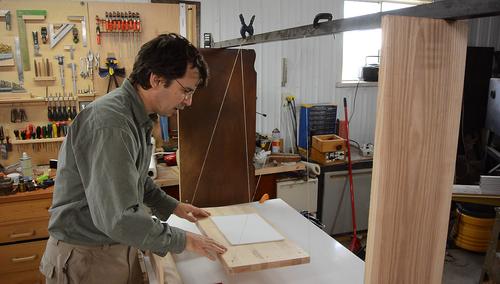 While explaining how a bell can ring two notes at once,
I rigged up a Lissajous pendulum to illustrate how even a pendulum can swing with two
periods at the same time.
While explaining how a bell can ring two notes at once,
I rigged up a Lissajous pendulum to illustrate how even a pendulum can swing with two
periods at the same time.
 While explaining how a bell can ring two notes at once,
I rigged up a Lissajous pendulum to illustrate how even a pendulum can swing with two
periods at the same time.
While explaining how a bell can ring two notes at once,
I rigged up a Lissajous pendulum to illustrate how even a pendulum can swing with two
periods at the same time.
I figured it would be cool to graph the motion of such a pendulum. The easiest would be to make the actual pendulum a swing with a pad of paper on it...
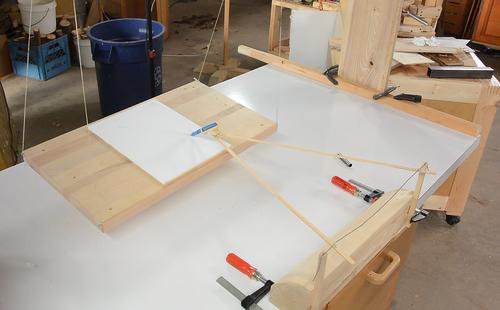 ... with a stationary pen graphing the motion on the pad.
... with a stationary pen graphing the motion on the pad.
I used a fountain pen (Pelikan brand) because fountain pens need almost no downward pressure to draw a line. I attached it to a very light yoke to hold the pen stationary while allowing it to move up and down.
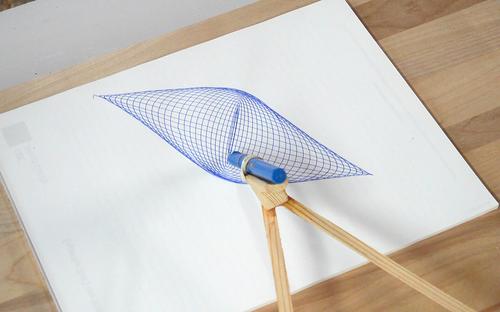 The first figure drawn with this swing. The pendulum has a different period of swing
side to side than it does front to back, so it produces a sort of decaying
Lissajous figure.
The first figure drawn with this swing. The pendulum has a different period of swing
side to side than it does front to back, so it produces a sort of decaying
Lissajous figure.
Unfortunately, even with very light pen pressure, the friction caused the motion do die out pretty fast. I have seen videos of people rigging up a Lissajous pendulum with a bottle full of sand that slowly drains. The advantage of drawing with sand is that there's no friction to slow it down, but the sand doesn't make for much detail.
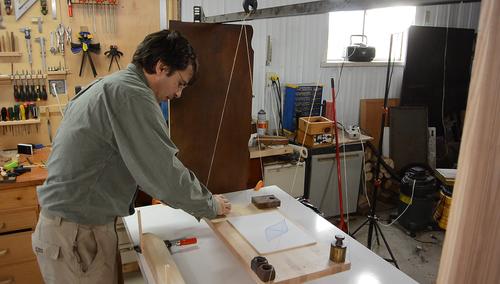 I added some weights on the swing to give it more inertia to swing longer.
I added some weights on the swing to give it more inertia to swing longer.
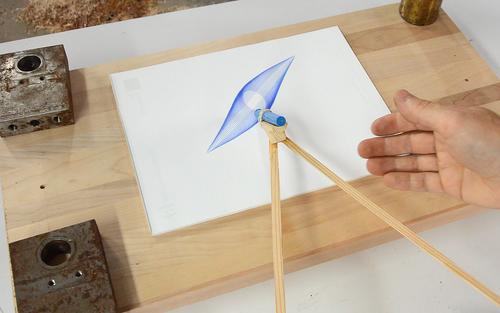
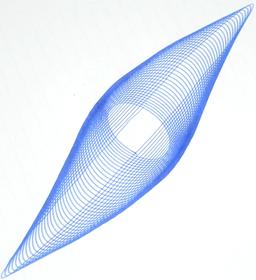 Which resulted in this figure. With the added weight, the frequency of side to side
swing was closer to the forward-back swing, so the figure just became tighter
without becoming more interesting.
Which resulted in this figure. With the added weight, the frequency of side to side
swing was closer to the forward-back swing, so the figure just became tighter
without becoming more interesting.
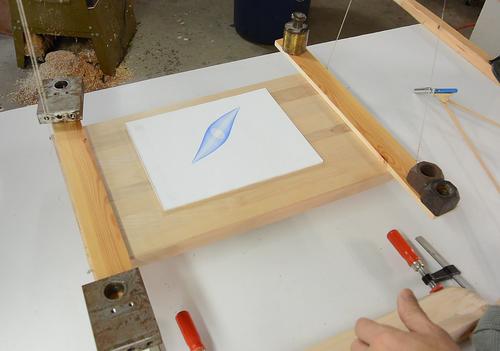 The reason the frequency of oscillation is different in the two axes is that the effective
length of the pendulum, swinging side-to-side, is a bit shorter than it is
front to back. Or you could also think of it this way: For the side-to-side swing, the swing
itself doesn't rotate, whereas for front to back it does, which adds to the overall
moment of inertia of the pendulum, making the swing period slightly longer.
The reason the frequency of oscillation is different in the two axes is that the effective
length of the pendulum, swinging side-to-side, is a bit shorter than it is
front to back. Or you could also think of it this way: For the side-to-side swing, the swing
itself doesn't rotate, whereas for front to back it does, which adds to the overall
moment of inertia of the pendulum, making the swing period slightly longer.
I moved the weights further out, past the platform, to give it even more inertia in the front to back swing, making the period longer.
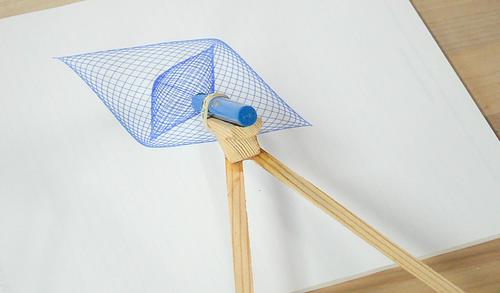 And the figure became more interesting. The two axis went from in phase to out of phase
to back in phase before it stopped swinging.
And the figure became more interesting. The two axis went from in phase to out of phase
to back in phase before it stopped swinging.
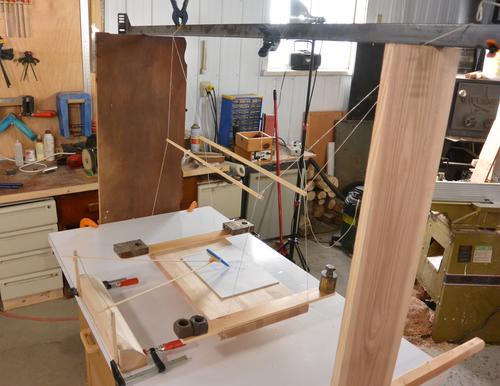
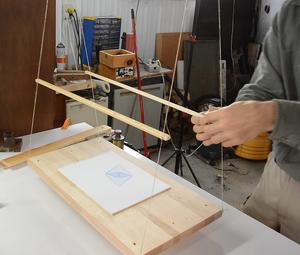 Then I had the idea of making the two periods of swing differ more substantially. It
wasn't practical to extend the weights out much further, so instead I shortened the
effective side-to-side pendulum length. I attached two sticks of wood to the strings
holding the swing, then constrained these from moving side-to-side with another set of
strings up to the bar.
Then I had the idea of making the two periods of swing differ more substantially. It
wasn't practical to extend the weights out much further, so instead I shortened the
effective side-to-side pendulum length. I attached two sticks of wood to the strings
holding the swing, then constrained these from moving side-to-side with another set of
strings up to the bar.
The side-to-side swing is now only below the sticks of wood, making for a much shorter swing period. The front to back swing and period was unchanged.
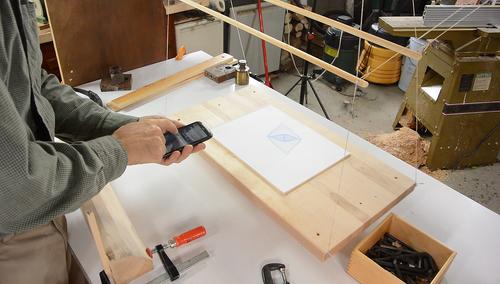 I timed the two periods of swing and made adjustments to get them close to 2:3.
I timed the two periods of swing and made adjustments to get them close to 2:3.
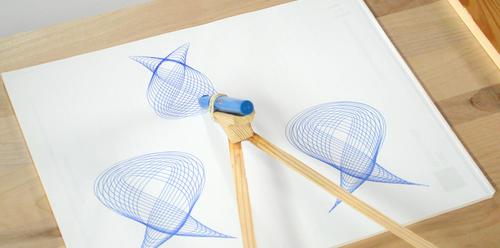 Here's some figures drawn with that configuration.
Here's some figures drawn with that configuration.
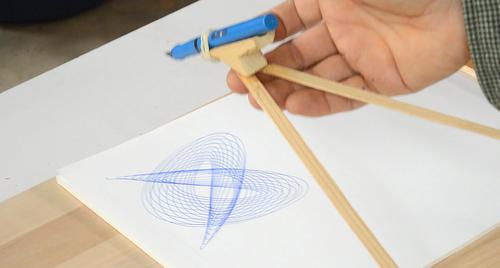 More experiments. This figure with a ratio that is close to 3:4
More experiments. This figure with a ratio that is close to 3:4
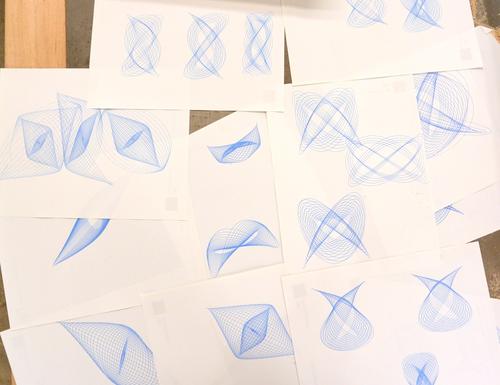 I played around with it quite a bit, tweaking where the strings and weight were.
I played around with it quite a bit, tweaking where the strings and weight were.
A bit like playing around with a rose engine, I guess, except much simpler.
Of course, it would be much easier to just program a computer to draw these things, but having a physical apparatus draw them is more interesting.
Though, while I was still in school, I experimented with this sort of thing just for fun.
More physics related articles:
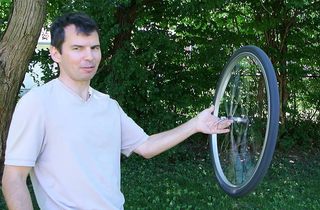 Gyro effect explained
Gyro effect explained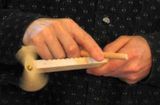 The hui game. Also
The hui game. Also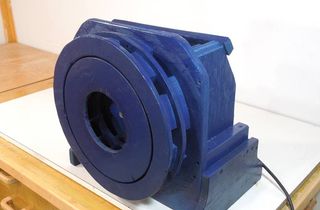 Building an air raid siren
Building an air raid siren